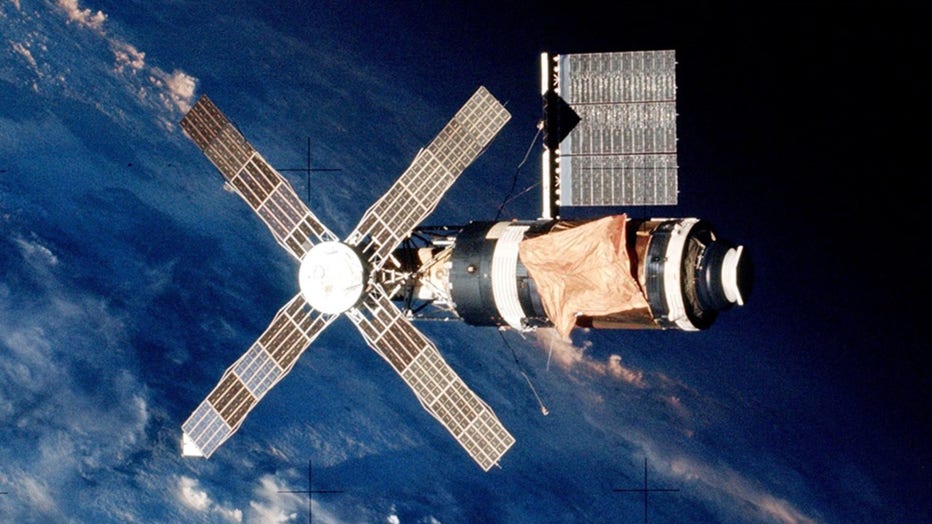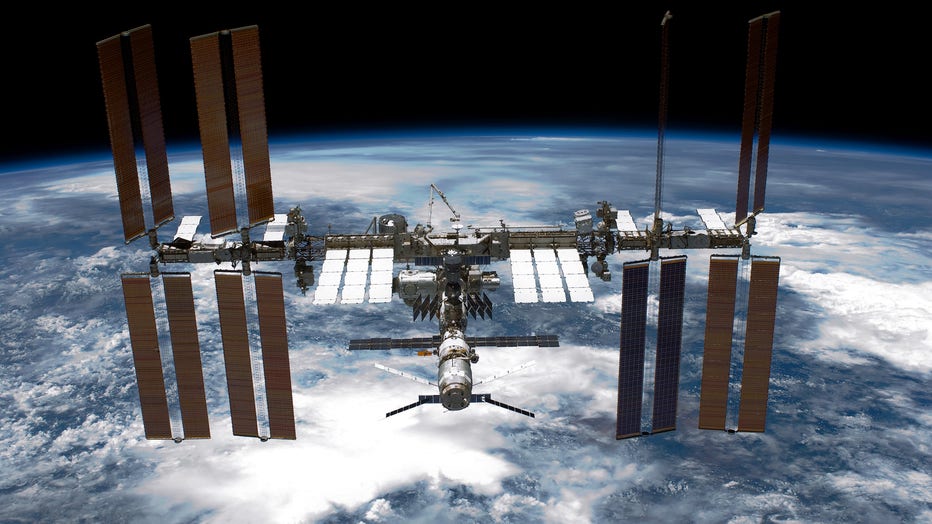Launch of SpaceX Demo-2 caps six decades of crewed spaceflight
LAKE MARY, Fla. - Another milestone in space exploration was achieved by Americans on Saturday when a SpaceX rocket successfully launched from Cape Canaveral carrying NASA's Doug Hurley and Bob Behnken on board a bullet-shaped Crew Dragon capsule.
The launch has ushered in a new era in commercial space travel and put the United States back in the business of sending astronauts into orbit from U.S. soil for the first time in nearly a decade. It also marks the latest chapter in the history of crewed spaceflight that now spans six decades.
The first human to travel into space was Soviet cosmonaut Yuri Alekseyevich Gagarin, who on April 12, 1961, was launched into orbit aboard the spacecraft Vostok 1. Less than a month later, on May 5, America would send Alan Shepard into space aboard Freedom 7. Shepard's suborbital flight, at 15 minutes and 28 seconds, was a huge milestone for Project Mercury, which began three years earlier with the goal of putting a man into Earth orbit and returning him safely.
Mercury Program

Known as the Mercury Seven or Original Seven, they are (front row, left to right) Walter M. "Wally" Schirra Jr., Donald K. "Deke" Slayton, John H. Glenn Jr., M. Scott Carpenter, (back row) Alan B. Shepard Jr., Virgil I. "Gus" Grissom and L. Gordon Co
Shepard was one of seven men introduced to the public on April 9, 1959, during a news conference in Washington, D.C. He was joined on the stage by Scott Carpenter, Gordon Cooper, John Glenn, Virgil "Gus" Grissom, Walter "Wally" Schirra, and Donald Kent "Deke" Slayton. There would be a total of six manned flights under Project Mercury before it concluded in 1963. Glenn would be the first to orbit the planet on board the Friendship 7, on Feb. 20, 1962. The three-orbit flight would last just under five hours.
A "Space Race" between two Cold War rivals, the Soviet Union and the United States, was on, and President John F. Kennedy would raise the stakes when he delivered a stirring speech on September 12, 1962, that called for Americans to land on the Moon.
"We choose to go to the Moon in this decade and do the other things, not because they are easy, but because they are hard," President Kennedy told the thousands in attendance at Rice University in Houston.
Gemini Program

NASA Astronaut Ed White made history on June 3, 1965, when he floated out of the hatch of his Gemini 4 capsule into the void of space. The first American "spacewalk" - or Extravehicular Activity (Courtesy: NASA)
Project Gemini was NASA's second human spaceflight program, conducted between 1961 and 1966, designed as a bridge between the Mercury and Apollo programs. It consisted of a total of 19 launches, two initial uncrewed test missions, seven target vehicles, and 10 crewed missions, each of which carried two astronauts to Earth orbit. NASA selected “Gemini” because the word is Latin for “twins,” and the Gemini was a capsule built for two.
The crewed missions were flown between March 1965 and November 1966. It was during this time, on June 3, 1965, that astronaut Ed White became the first American to walk in space, which lasted approximately 23 minutes.
Project Gemini objectives included: long-duration flights; testing the ability to maneuver a spacecraft and to achieve rendezvous and docking of two vehicles in Earth orbit; training of both flight and ground crews; conducting experiments in space; extravehicular operations (standup sessions and spacewalks); active control of reentry to achieve a precise landing; and onboard orbital navigation. The Gemini missions lasted for periods ranging from five hours to 14 days.
Apollo Program, Skylab, and Apollo-Soyuz Test Project

The ascent stage of the Apollo 11 lunar module approaching the command module for docking before the crew returned to Earth. (Courtesy: NASA)
Just as Project Gemini overlapped with Project Mercury, Project Apollo would overlap with Project Gemini and run from 1963 to 1972. The program was designed to land humans on the Moon and bring them safely back to Earth.
The Apollo program was hit by tragedy as the first crew prepared to fly. On Jan. 27, 1967, fire swept through the Apollo 1 command module during a preflight test on the Cape Kennedy launch pad. Astronauts Gus Grissom, Ed White, and Roger Chaffee lost their lives. NASA was not deterred but rather changed how things were done to ensure the safety and success of future missions.
Apollos 7 and 9 were Earth-orbiting missions to test the Command and Lunar Modules. Apollos 8 and 10 tested various components while orbiting the Moon. It was on July 20, 1969, that Apollo 11 Commander Neil Armstrong placed the first human footstep on the Moon. Five other missions (Apollos 12, 14, 15, 16, and 17) would achieve the goal of landing humans on the Moon. Apollo 13 did not land on the Moon due to a malfunction.

Skylab expeditions paved the way for the International Space Station. (Courtesy: NASA)
Skylab was the first United States space station, launched by NASA on May 14, 1973. It was occupied for about 24 weeks between May 1973 and February 1974 and operated by three separate three-man crew. Skylab expeditions paved the way for the International Space Station. The four, windmill-like solar arrays were attached to the Apollo Telescope Mount. Observations of the Sun were one of this space lab program’s primary achievements.
In the 1970s, U.S.-Soviet political tensions that had accelerated the Space Race began to thaw. The competition gave way to cooperation between the two nations with the Apollo-Soyuz Test Project. International collaboration among many nations would become the norm during the space shuttle era and current cooperation in human spaceflight with the International Space Station.
Shuttle Program and International Space Station

Space Shuttle Columbia, the world’s first reusable space vehicle, landing at NASA's Dryden Flight Research Center (now NASA's Armstrong Flight Research Center) at Edwards Air Force Base, California, April 14, 1981. (Courtesy: NASA)
NASA engineers had been studying the idea of a reusable spacecraft that could launch like a rocket but land like an airplane. In 1972, work began on what would become the space shuttle, a space transportation system consisting of an orbiter attached to solid rocket boosters and an external fuel tank. The first space shuttle, named Enterprise, made its debut on September 17, 1976. The Enterprise, which had no engines or heat shields, functioned as a glider and never reached space. The second orbiter, Columbia, would become the first functioning spacecraft. It blasted off on April 12, 1981, piloted by astronauts John Young and Robert Crippen.
NASA's space shuttle fleet would soon grow, with the addition of Challenger, Discovery, Atlantis, and Endeavour. Over 30 years, the space shuttle fleet flew 135 missions and carried 355 different people to space. Humanity's first reusable spacecraft, the space shuttle carried people into orbit repeatedly; launched, recovered and repaired satellites; conducted cutting-edge research; and built the largest structure in space, the International Space Station.
The space shuttle pushed the bounds of discovery ever farther, requiring not only advanced technologies but also the tremendous efforts of thousands of civil servants and contractors throughout NASA's field centers and across the nation. Tragically, NASA lost two crews of seven in the 1986 Challenger accident and the 2003 Columbia accident.
The final space shuttle launch was that of Atlantis on July 8, 2011.

The International Space Station (ISS) backdropped by planet Earth. (Photo by NASA via Getty Images)
The International Space Station is a model for global cooperation and scientific advancements that is enabling the growth of the private industry in low-Earth orbit and the development of new technologies to advance human space exploration. Built between 1998 and 2011, the space station has housed humans continuously since Nov. 2, 2000. Because molecules and cells behave differently in space, research in microgravity helps advance scientific knowledge. The space station is a U.S. National Laboratory, which the Center for the Advancement of Science in Space (CASIS) manages for research investigations that improve life on Earth. NASA has contracted with commercial companies SpaceX, Orbital ATK, and Sierra Nevada Corporation to deliver science investigations, cargo, and supplies to the crews living in space, and soon Boeing and SpaceX will transport astronauts to and from the station.
Information taken from National Aeronautics and Space Administration archives.

